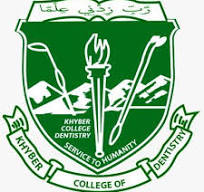TRACHEOSTOMY IN MAXILLOFACIAL SURGERY- 3 YEARS RETROSPECTIVE ANALYSIS OF PATIENTS TREATED AT KHYBER COLLEGE OF DENTISTRY
DOI:
https://doi.org/10.33279/jkcd.v7i02.410Keywords:
Surgical airway, Tracheostomy, Maxillofacial surgery, Pan-facial trauma, temporomandibular joint ankylosisAbstract
Objective: The objective of this study is to determine the frequency of different maxillofacial conditions requiring tracheostomy.
Material and Methods: A retrospective analysis of patient admitted to the department of Oral & Maxillofacial Surgery at Khyber College of Dentistry during a period from January 2014 to December 2016 was carried out. Patients with maxillofacial condition, requiring surgical tracheostomy, were included. Frequencies and percentages were calculated using SPSS version 20.
Results: Out of total 3707 patients 162 (4.37%) patients underwent surgical tracheostomy. Among them 102 (62.96%) where male and 60 were (37.04%) were female. Majority of the patients were in age group 11-20 years. The primary presenting complains was pan facial trauma (39.51%). Among the patients in whom surgical airway was performed, 79 (48.76%) acquired surgical airway in emergency while 83 (51.24%) went through elective procedure.
Conclusions: In Maxillofacial surgery, tracheostomy is needed in situations like Pan-facial trauma, limited mouth opening due to temporomandibular joint ankylosis and impending airway because of severe facial space infection. Careful evaluation and timely decision can prevent emergent situations and loss of lives.
Downloads
Published
How to Cite
Issue
Section
License
Copyright (c) 2017 Basheer- Rehman, Nadia Burair, Fahad Qiam, Muslim Khan, Atta ur Rehman, Tariq Ahmad, Shuja Riaz Ansari

This work is licensed under a Creative Commons Attribution-NonCommercial-NoDerivatives 4.0 International License.
You are free to:
- Share — copy and redistribute the material in any medium or format
- Adapt — remix, transform, and build upon the material
- The licensor cannot revoke these freedoms as long as you follow the license terms.
Under the following terms:
- Attribution — You must give appropriate credit , provide a link to the license, and indicate if changes were made . You may do so in any reasonable manner, but not in any way that suggests the licensor endorses you or your use.
- NonCommercial — You may not use the material for commercial purposes .
- No additional restrictions — You may not apply legal terms or technological measures that legally restrict others from doing anything the license permits.









